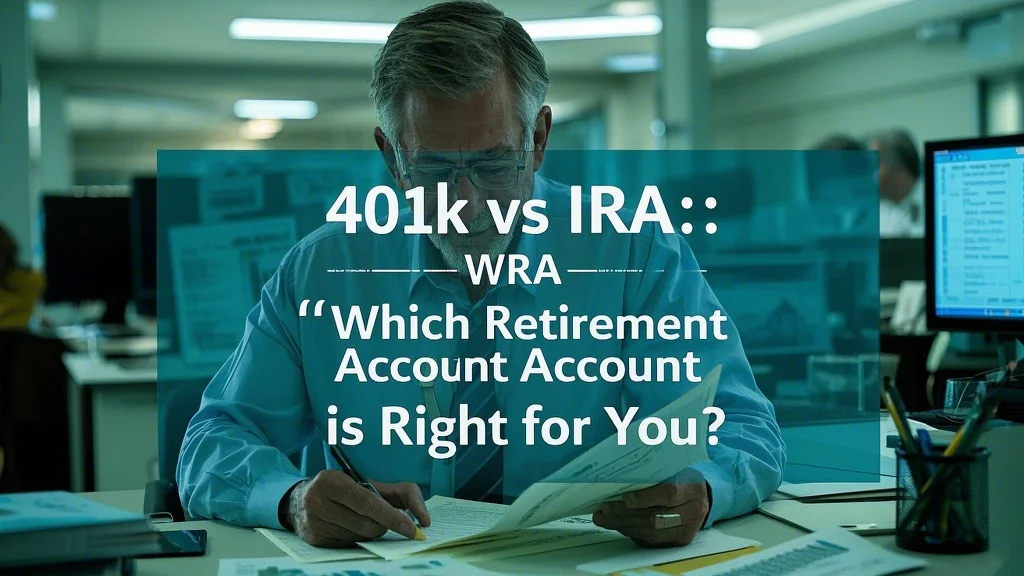Maximizing Your 401k Retirement Planning Strategy
When evaluating 401k retirement planning, it’s essential to understand these employer-sponsored plans offer unique advantages that can supercharge your retirement savings. The most compelling benefit remains employer matching contributions – essentially free money that can dramatically accelerate your nest egg growth. In 2024, 401(k) plans allow contributions up to $23,000 (plus $7,500 catch-up for those 50+), with higher limits for certain small business plans. What makes 401(k)s particularly powerful is their payroll deduction feature, which automates savings and makes consistent contributions painless. Many plans now offer Roth options alongside traditional pre-tax contributions, providing valuable tax diversification. The best 401(k) strategies involve contributing at least enough to capture full employer matches, then systematically increasing contributions over time as your salary grows.
Sophisticated 401k retirement planning also considers investment options within your plan. While 401(k)s typically have more limited investment choices than IRAs, many now offer brokerage windows that expand selection. Another critical factor is vesting schedules for employer contributions – understanding when these funds truly become yours is essential for job transition decisions. The SECURE 2.0 Act has enhanced 401(k) features, including emergency savings provisions and improved portability for part-time workers. For those nearing retirement, special attention should be paid to required minimum distribution (RMD) rules and potential in-plan Roth conversion opportunities during low-income years. Regular portfolio rebalancing within your 401(k) helps maintain appropriate risk levels as markets fluctuate and you approach retirement.
Understanding the IRA vs 401k for Retirement Decision
The IRA vs 401k for retirement comparison involves evaluating multiple factors to determine the optimal savings vehicles for your situation. Traditional 401(k) plans shine for high-income earners seeking immediate tax deductions and maximum contribution capacity, while IRAs offer greater investment flexibility and often lower fees. Roth options in both account types provide tax-free growth potential, with Roth IRAs having the added advantage of no required minimum distributions during your lifetime. What makes this decision particularly complex is that it’s rarely an either/or choice – most successful savers use both account types strategically throughout their careers.
A key differentiator in the IRA vs 401k for retirement analysis is income level. High earners may face reduced or eliminated IRA deduction limits, making 401(k) contributions more attractive. Conversely, those without employer-sponsored plans can still fully utilize IRAs. Another critical consideration is creditor protection – 401(k)s enjoy robust federal protection, while IRA safeguards vary by state. The most sophisticated strategies involve “backdoor Roth IRA” conversions for high-income individuals and “mega backdoor Roth” options when available in 401(k) plans. As your career progresses and financial situation changes, periodic reassessment of your account mix ensures you’re always using the most advantageous vehicles available.

Comprehensive Retirement Accounts Comparison Beyond the Basics
A thorough retirement accounts comparison examines more than just contribution limits and tax treatments – it evaluates how different accounts work together in a holistic retirement strategy. SEP IRAs and Solo 401(k)s offer powerful options for self-employed individuals, with contribution limits reaching $69,000 in 2024. Health Savings Accounts (HSAs), while not traditional retirement accounts, provide triple tax advantages when used for medical expenses in retirement. What distinguishes exceptional retirement planning is understanding how these various accounts complement each other – using 401(k)s for employer matches, IRAs for investment flexibility, and taxable accounts for pre-retirement liquidity needs.
Modern retirement accounts comparison must also consider withdrawal rules and penalties. 401(k) plans allow penalty-free withdrawals at age 55 if you leave your job in or after the year you turn 55, while IRAs typically require waiting until 59½. Required Minimum Distribution (RMD) rules differ between account types, with recent legislation pushing the starting age to 73 (rising to 75 in 2033). Another critical factor is loan availability – some 401(k) plans permit loans (though this is generally discouraged), while IRAs do not. The most comprehensive comparisons also evaluate estate planning implications, as inherited retirement accounts now have different distribution rules for non-spouse beneficiaries under the SECURE Act.
Building Tax-Efficient Retirement Plans with Multiple Accounts
Creating truly tax-efficient retirement plans requires strategic use of both traditional and Roth accounts to optimize your lifetime tax situation. The conventional wisdom of deferring taxes through traditional contributions isn’t always right – for younger workers in lower tax brackets or those anticipating higher future taxes, Roth options may prove superior. What makes tax-efficient planning challenging is predicting future tax rates, which is why maintaining flexibility through a mix of account types is ideal. The most sophisticated strategies involve “tax bracket management” in retirement – carefully planning withdrawals from different account types to stay within favorable tax brackets each year.
Advanced tax-efficient retirement plans also consider state tax implications, particularly for those who might relocate in retirement. Roth conversions during low-income years can be powerful tools for reducing future RMDs and tax burdens. Another critical strategy is “asset location” – placing tax-inefficient investments like bonds in tax-deferred accounts while keeping growth-oriented investments in Roth accounts. The SECURE 2.0 Act has introduced new opportunities for tax-efficient planning, including allowing 529-to-Roth IRA rollovers and expanding qualified charitable distribution options. Regular reviews with a tax professional ensure your retirement account strategy adapts to changing tax laws and personal circumstances.
Optimizing Investment Strategies for Retirement Accounts
Effective investment strategies for retirement must account for the different characteristics and rules of 401(k)s and IRAs. In 401(k) plans with limited investment options, focus on building a diversified core portfolio using available index funds or target-date funds. IRAs, with their broader investment choices, are ideal for implementing more sophisticated strategies or holding specific assets like individual stocks or REITs. What distinguishes exceptional retirement investing is maintaining appropriate asset allocation across all accounts rather than viewing each in isolation. The most successful approaches consider your entire portfolio as one unified whole, then determine the most tax-efficient placement for each asset class.
Modern investment strategies for retirement also emphasize the importance of adjusting risk as retirement approaches. While 401(k) target-date funds automate this process, self-directed IRA investors must actively manage their glide paths. Another critical consideration is rebalancing methodology – whether to rebalance within each account or across accounts for greater tax efficiency. The most forward-thinking strategies also incorporate alternative investments in IRAs when appropriate, though care must be taken to avoid unrelated business taxable income (UBTI) issues. As retirement nears, attention shifts from pure accumulation to income generation and capital preservation, requiring different investment approaches in both 401(k) and IRA accounts.
Synthesizing the Best Retirement Account Approach
When properly coordinated, strategic 401k retirement planning, informed decisions about IRA vs 401k for retirement, comprehensive retirement accounts comparison, tax-efficient retirement plans, and thoughtful investment strategies for retirement create a retirement savings approach greater than the sum of its parts. The most successful implementations recognize that these accounts serve different but complementary purposes throughout your career. They maximize employer matches in 401(k)s early on, then add IRA contributions as income allows, and eventually utilize taxable accounts for additional savings and flexibility.
Investors who build substantial retirement nest eggs are those who start early but understand it’s never too late to improve their situation. They contribute consistently, increase savings rates with raises, and avoid early withdrawals that derail compounding. Perhaps most importantly, they view retirement accounts not in isolation but as interconnected components of a lifelong financial plan that evolves with changing circumstances, tax laws, and market conditions. In an era of increasing retirement responsibility, this disciplined yet flexible approach offers the best path to financial security in your golden years.
